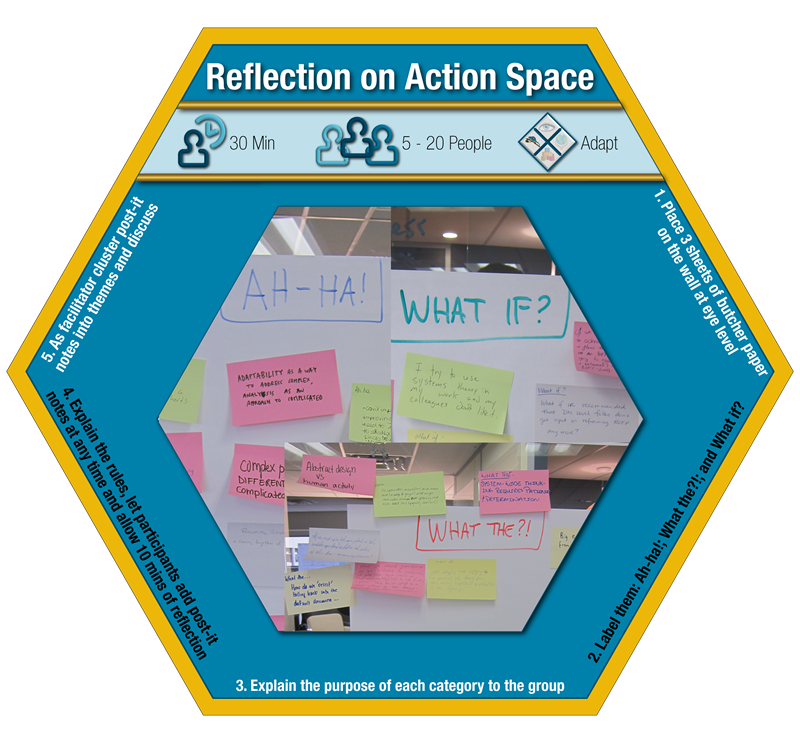Reflection on Action Space
The reflection on action space is a way to gather real time feedback during a
systemic design workshop. By creating a space where people can share insights
and frustrations, the reflection on action space allows facilitators to engage
issues that might otherwise be ignored and adapt the process when required. When to use it?
Adapt: The reflection on action space helps
groups with the adapt phase. By creating a parking lot for reflection,
participants can add new insights at any point in the project. During a
workshop, it is important to set aside time each day to reflect and then discuss
the group’s feedback. This often works best at the start or the end of the day. How to do it? Place three sheets of butcher paper on the wall at eye level.
Label them: Ah-ha! What the?! What if?
Explain the purpose for each category to the group. Ah-ha captures the light
bulb moments. What-the expresses confusion, frustration, or tension. What-if
encourages creative thinking.
Explain the rules, let participants add post-it notes at any time and allow
10 minutes for reflection. It is important to allow both spontaneous additions
but also dedicated time to reflect. Contributions are anonymous, although the
group may be asked to elaborate on the comments.
As facilitator, cluster post-it notes into themes and discuss. Pay attention
to patterns as well as deeper issues that may be preventing progress.
Requirements
People:
Groups of 5-20 people can
participate in this activity. The method scales to larger groups but not all
feedback will be able to be discussed in the debrief. Time:
30 minutes.
Pros and Cons
Pros: - Builds group cohesion.
- Creates a habit of regular reflection and continuous improvement.
Cons: - If frustrations are expressed but not addressed, this method can be counterproductive.
- Can be time consuming if the group dives into a particularly contentious issue.
Considerations - It often works best to ask participants to reflect at the end of the day, but leave the discussion for the following morning. This allows people to add more thoughts they may have had overnight. Participants may be too tired to discuss the issues deeply at the end of the day, and holding it the next morning also provides a useful re-cap of the previous day.
- Once participants are used to the method, encourage them to help organize the feedback, and to lead the discussion.
- Feedback can usually be grouped according to feedback on process and feedback on content. Both are useful to capture and discuss.
|
Examples 
Image Source: Government of Alberta internal systemic design training course –
May 2014 |
Additional Resources Reflection
Circle Resources |
 |
